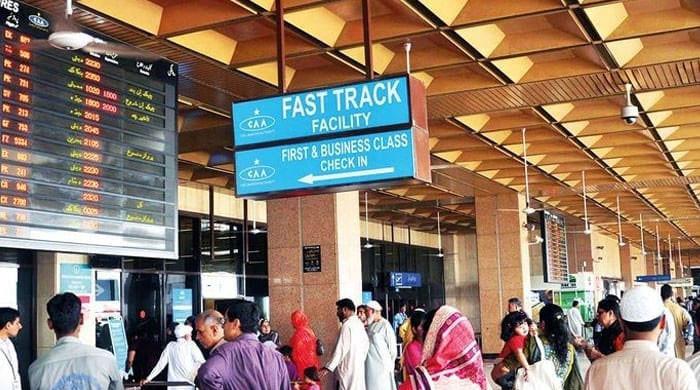Pakistan to forgo donor appeals after poor 2022 floods response, says planning minister
Govt launches a preliminary 2025 flood damage tally of Rs822 billion for all provinces
October 18, 2025

- Punjab faces Rs631bn, largest provincial loss share.
- Fiscal Year 25-26 growth cut to 3.5% to 3.9% from 4.2%.
- Overall damage to GDP is estimated at 0.3% to 0.7%
ISLAMABAD: Minister for Planning Ahsan Iqbal has said the government resolved annual trade-data discrepancies of around $6 billion to the satisfaction of the International Monetary Fund (IMF), The News reported on Saturday.
He announced that Pakistan would not seek assistance from international donors, given their poor response to the 2022 floods. He also launched a preliminary assessment putting damages from the 2025 floods at $2.9 billion.
Addressing a news conference at the P Block Auditorium in the federal capital on Friday, the federal minister said Pakistan suffered $30 billion in losses in the 2022 deluge but received only $600 million in international assistance.
Against total pledges of $10.9 billion, he said the remaining assistance was committed through the re-purposing of loans by the international donors. Now the government, he said, had decided to assist the flood-affected areas with the help of its own resources, keeping in view the appetite of international donors.
Iqbal said the prime minister had congratulated KP Chief Minister Sohail Afridi, arguing that there was a need to give priority to the state instead of vested political interests.
“There are old and new ways of collecting trade data, and its solution has been sorted out through the data of the State Bank of Pakistan. Now the PRAL and Pakistan Single Window (PSW) data have been harmonised. The IMF is satisfied with this solution,” the minister said.
According to a preliminary assessment, the total damages caused by the 2025 floods across all provinces and regions were estimated at Rs822 billion ($2.9 billion). The majority of the financial impact is concentrated in Punjab, highlighting the vulnerability of the province to the disaster.
The other provinces/regions experienced relatively minor damage in comparison, but still significant in the context of local economies and infrastructure. Out of the total damages of Rs822 billion, Punjab faced the highest damages of Rs631 billion, followed by KP Rs51.3 billion, Sindh Rs32.2 billion, GB Rs13 billion, AJK Rs9.3 billion, Balochistan Rs7 billion, and others Rs78.1 billion.
According to the preliminary estimates, the overall damage to the GDP is estimated at 0.3% to 0.7%, reducing the FY26 growth outlook to 3.9% to 3.5% from the target of 4.2%. Consequently, the level of unemployed workers could increase by almost 0.22 million in FY 2026.
The 2025 floods have caused extensive damage to the agriculture sector, with rice, coon, sugarcane, maize, fodder, and vegetable fields bearing the brunt of inundation.
According to the provincial governments, vast stretches of cultivated land remain submerged, raising concerns about food security, export earnings, and rural livelihoods. Due to the crop damage, the agriculture sector is projected at 3.0% to 3.8%.
Due to the backward linkages with agriculture and infrastructure damages to the energy sector, the industrial sector’s growth is projected to decline by 0.1- 0.2 percentage points, with output expected to grow by 4.1% to 4.2% in FY2026, compared to the target of 4.3% against the target of 4.5%.
Given the backward linkages with the commodity-producing sectors (agriculture and industry), the growth in the services sector is expected to decline by 0.5-0.3 percentage points. Thus, for FY2026, the sector is projected to grow at 3.5% to 3.7%, against the target of 4.0%.









